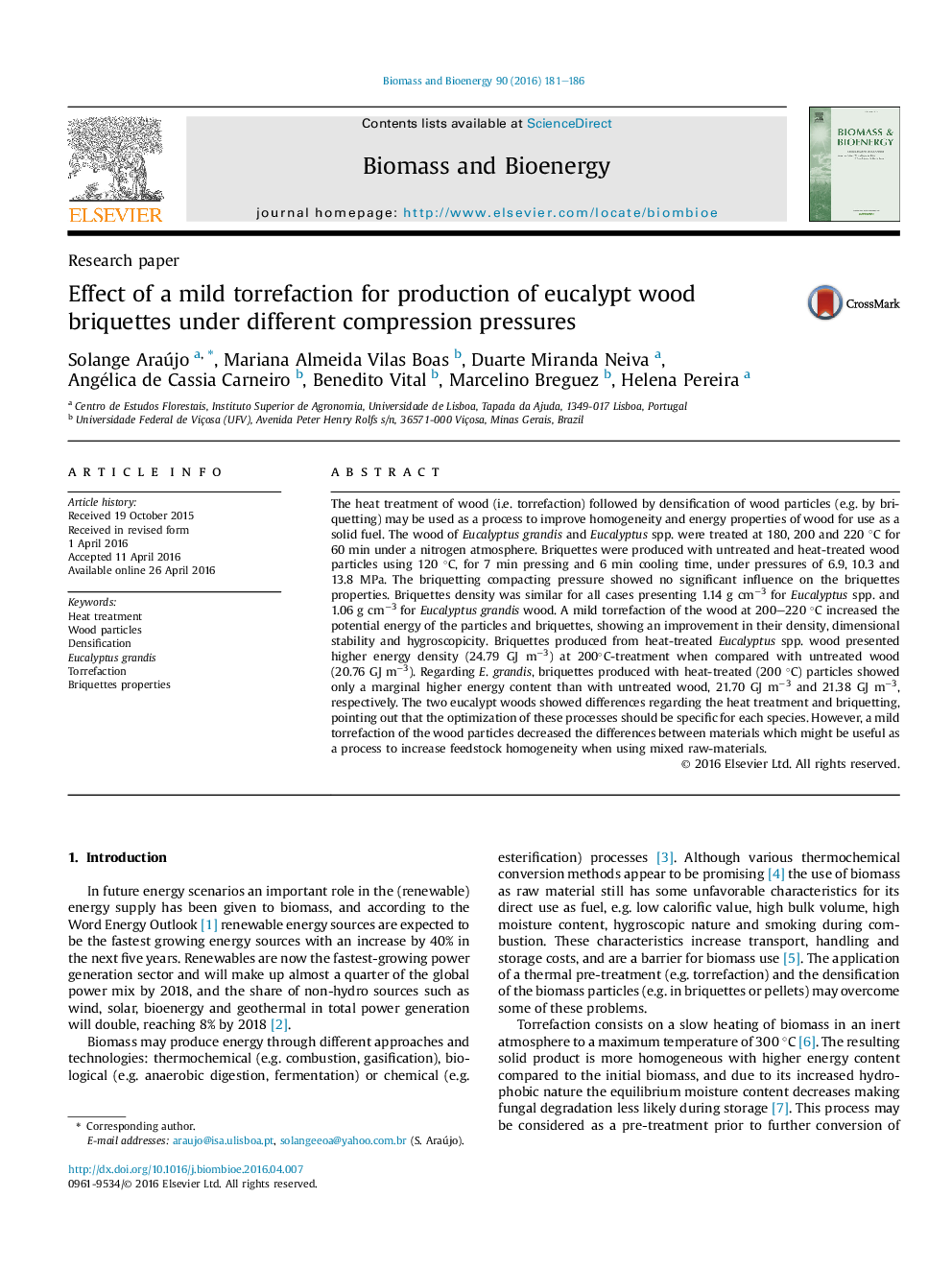| Article ID | Journal | Published Year | Pages | File Type |
|---|---|---|---|---|
| 676706 | Biomass and Bioenergy | 2016 | 6 Pages |
•The two studied eucalypt woods showed potential for production of briquettes.•Briquetting compacting pressure had little influence on their properties.•Lowest pressure produced good quality briquettes for untreated heat treated wood.•Mild torrefaction increased particles and briquettes' energy potential.•Briquettes' density, dimensional stability and hygroscopicity improved with treatment.
The heat treatment of wood (i.e. torrefaction) followed by densification of wood particles (e.g. by briquetting) may be used as a process to improve homogeneity and energy properties of wood for use as a solid fuel. The wood of Eucalyptus grandis and Eucalyptus spp. were treated at 180, 200 and 220 °C for 60 min under a nitrogen atmosphere. Briquettes were produced with untreated and heat-treated wood particles using 120 °C, for 7 min pressing and 6 min cooling time, under pressures of 6.9, 10.3 and 13.8 MPa. The briquetting compacting pressure showed no significant influence on the briquettes properties. Briquettes density was similar for all cases presenting 1.14 g cm−3 for Eucalyptus spp. and 1.06 g cm−3 for Eucalyptus grandis wood. A mild torrefaction of the wood at 200–220 °C increased the potential energy of the particles and briquettes, showing an improvement in their density, dimensional stability and hygroscopicity. Briquettes produced from heat-treated Eucalyptus spp. wood presented higher energy density (24.79 GJ m−3) at 200°C-treatment when compared with untreated wood (20.76 GJ m−3). Regarding E. grandis, briquettes produced with heat-treated (200 °C) particles showed only a marginal higher energy content than with untreated wood, 21.70 GJ m−3 and 21.38 GJ m−3, respectively. The two eucalypt woods showed differences regarding the heat treatment and briquetting, pointing out that the optimization of these processes should be specific for each species. However, a mild torrefaction of the wood particles decreased the differences between materials which might be useful as a process to increase feedstock homogeneity when using mixed raw-materials.
